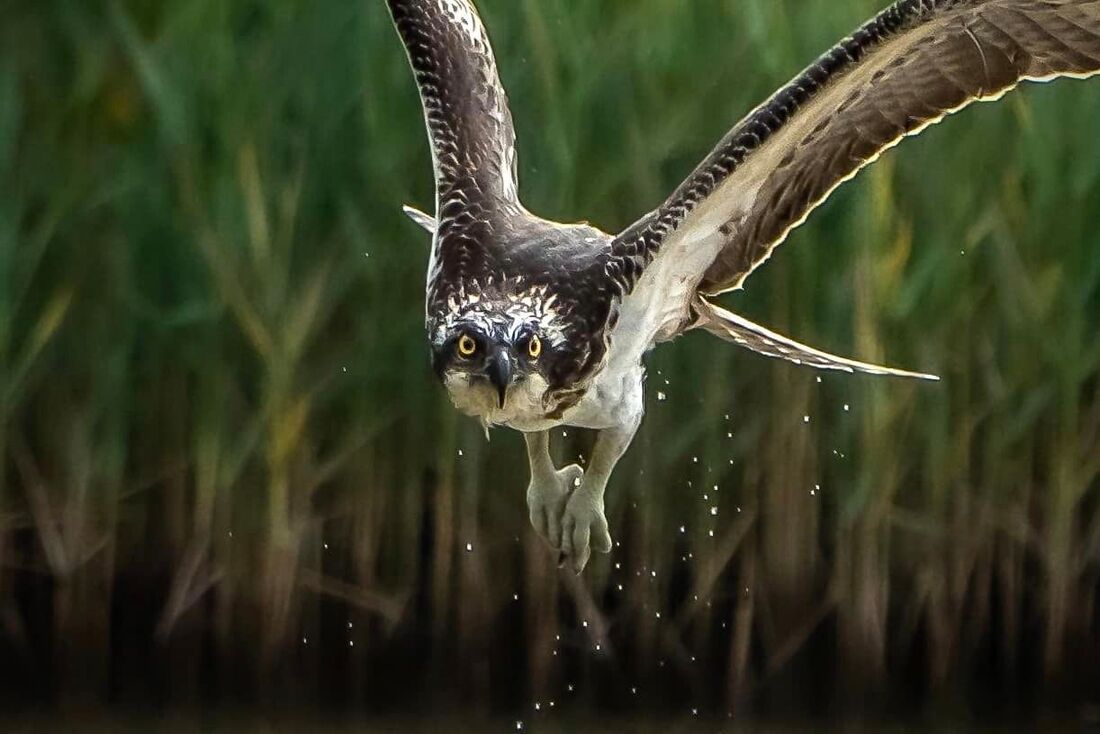|
Osprey tourism has long been a phenomenon in Scotland and for almost 20 years around the nest site at Pont Croesor on the Afon Glaslyn, but the north coast got in on the action this week. Two individuals have been drawing the crowds and cameras. Unringed juveniles at Aber Ogwen and the Cefni Valley have remained throughout the week and are still present today (Monday), taking advantage of a good supply of fish before they head to west Africa for the winter. Others were over Pen-y-cil, near Aberdaron on Monday and a second bird was at RSPB Cors Ddyga, but the family from Pont Croesor have left the area.
A flock of Pale-bellied Brent Geese, a few of the locally rarer Dark-bellied form among them, at Foryd Bay signal the arrival of autumn from northeast Canada. Pink-footed Geese now arriving in the Dee Estuary and seen over several other places, including Llysfaen and Conwy, have bred in Iceland; a flock over Bardsey was unusual. Two Curlew Sandpipers are at Barmouth, Dotterel on the Great Orme, Black Tern off Aber Dysynni, Little Stint at Llyn Brenig and Spotted Redshanks at Foryd Bay and RSPB Conwy, while an American Golden Plover remains west of Cemlyn. A Barred Warbler and five Tree Sparrows dropped into Bardsey last week, as did a Hoopoe at Anglesey’s Porth Wen and a Cattle Egret at Aber Ogwen, but each stayed only for an afternoon. Four Garganey remained on Cefni Reservoir last week, with another at Llyn Llygeirian. A count of 81 Little Egrets on the Inland Sea was the highest ever on Anglesey. Sabine’s Gull and Long-tailed Skua flew past Bardsey last week, but there have been relatively few sightings of Great Skua off our coast this autumn, perhaps not surprising given that they are one of the birds hit hardest on their Scottish breeding grounds by bird flu. Reports of birds sick and dying of avian influenza continue from around the Welsh coast, with Gannets especially affected. Images from the established colony at RSPB Grassholm in Pembrokeshire show large gaps in the breeding area and many birds lying dead on the rock. There are reports of many others dead in the water and washed up on beaches. Smaller numbers of dead Gannets around the North Wales coast may be from colonies in Scotland or Ireland. Many other species have been affected, including seabirds ringed in North Wales. A Great Black-backed Gull that fledged from a nest on St Tudwal’s Island West, off Abersoch, that was found dead near Rosslare, Ireland, with several Gannets and is presumed to have died of bird flu. It is another species that can ill afford more bad news, as a recent assessment shows that numbers of Great Black-backed Gulls have almost halved worldwide since 1985 and recommended that it should be classed as Vulnerable on the Global Red List.
0 Comments
Leave a Reply. |
Bird notesA weekly update of bird sightings and news from North Wales, published in The Daily Post every Thursday. Archives
July 2024
Categories |

 RSS Feed
RSS Feed
